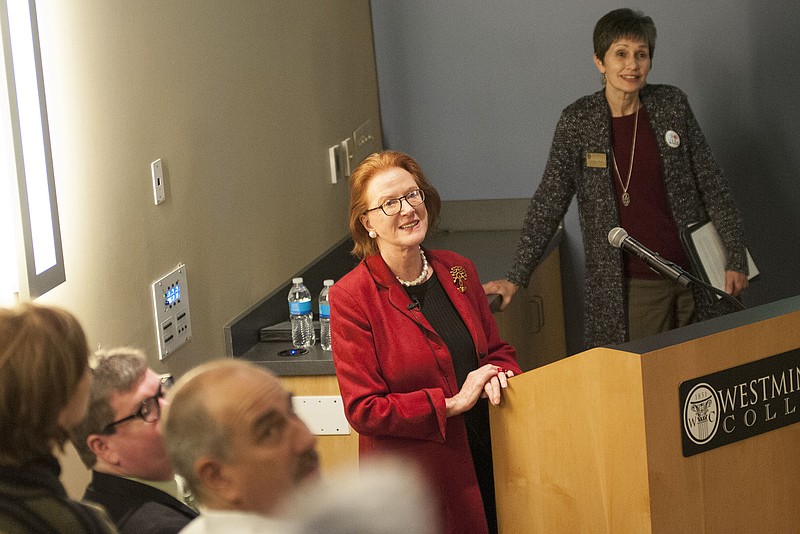Edwina Sandys, granddaughter of Winston Churchill, said the news on Nov. 9, 1989 that the Berlin Wall was coming down was welcome surprise.
"It happened very, very suddenly. People were amazed when it did happen," Sandys said during a presentation today at Westminster College. "It was a hopeful thing, a joyful moment."
On the 25th anniversary of the fall of the Berlin Wall, Sandys shared the story of how she traveled to Berlin in the months following that historic day to claim the eight sections of the wall that eventually became the "Breakthrough" sculpture on the Westminster campus.
A large part of that story involved negotiating with East German officials and convincing them to donate the sections of the wall - which were selling for $60,000 a piece at the time.
"After so many years of the Cold War, it was a strange feeling to sit down and work on a joint project with the very people I had grown up to regard as the enemy," Sandys said. "But they were human, they were friendly, they were enthusiastic, (and) they loved the idea of a monument of the Berlin Wall coming to Fulton."
Sandys also touched on how she came to select the eight pieces she brought back to New York to create that monument.
"One of the reasons I chose them was because they had 'unwahr' (spray painted on them), which means untruth," she said, noting she also selected those particular sections because they were "not too busy."
Sandys said her grandfather's famous Sinews of Peace speech - better known as the Iron Curtain speech, which he gave at Westminster in 1946 - was constantly on her mind while she worked on the sculpture.
"I wanted to portray freedom, breaking through the wall," she said.
Please see Tuesday's edition of the Fulton Sun for the full story on Sandys' presentation.

